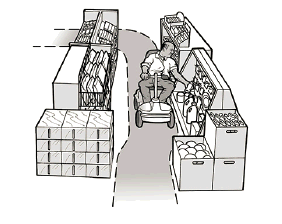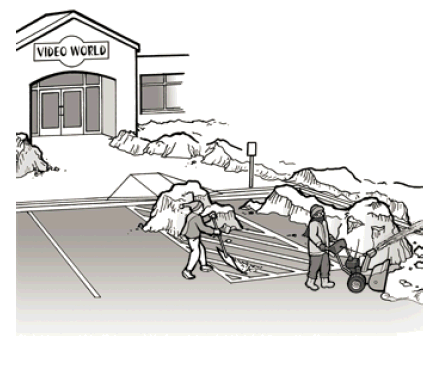Accessible Route to Goods and Services
The path a person with a disability takes to enter and move through your business is called an “accessible route.” This route, which must be at least three feet wide, must remain accessible and not be blocked by items such as vending or ice machines, newspaper dispensers, furniture, filing cabinets, display racks, or potted plants. Similarly, accessible toilet stalls, dressing rooms, or counters at a cash register must not be cluttered with merchandise or supplies.

An accessible route allows customers using mobility devices to access items for sale.
Temporary access interruptions for maintenance, repair, or operational activities are permitted, but must be remedied as soon as possible and may not extend beyond a reasonable period of time. Businesses must be prepared to retrieve merchandise for customers during these interruptions. For example, if an aisle is temporarily blocked because shelves are being restocked, staff must be available to assist a customer with a disability who is unable to maneuver through that aisle. In addition, if an accessible feature such as an elevator breaks down, businesses must ensure that repairs are made promptly and that improper or inadequate maintenance does not cause repeated failures. Businesses must also ensure that no new barriers are created that impede access by customers with disabilities. For example, routinely storing a garbage bin or piling snow in accessible parking spaces makes them unusable and inaccessible to customers with mobility disabilities.

Snow or other debris in accessible parking spaces and access aisles must be removed as soon as possible.

User Comments/Questions
Add Comment/Question